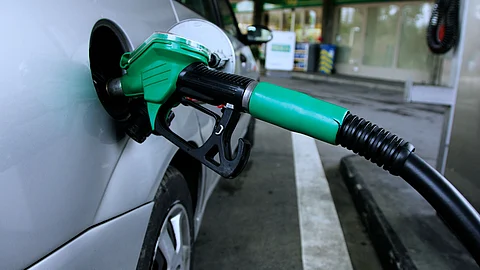

Mumbai: If petrol and diesel are brought under Goods & Services Tax (GST) they can come down to Rs 75 and Rs 68 per litre respectively, a report prepared by State Bank of India (SBI) has said.
Currently, petrol in Pune and other cities are hovering around Rs 97 mark while diesel is Rs 86. A report by SBI stated that if they are brought under GST, petrol can be cut down by Rs 22 per litre while prices of diesel can come down by Rs 18 per litre.
The economists put across their views in the SBI Ecowrap report, which said that lower prices for petrol and diesel assume that crude oil is priced at $60 a barrel and the exchange rate is Rs 73 per dollar. They said under the model made by them, the Centre and the states have a revenue deviation from budget estimates by only Rs 1 lakh crore or 0.4 per cent of GDP after adjusting for the increase in consumption with the intended price cut, but the relief offered to the consumers would be 'enormous'.
Retail prices of petrol and diesel have been moving up steadily this year, reaching new highs with every increase. It has risen on 26 days this year with petrol rising by 7.46 per litre to climb to Rs 91.17 a litre in Delhi, while diesel increased by Rs 7.60 per litre to reach Rs 81.47 in the national capital.
The SBI Ecowrap report in its model on retail price for petrol and diesel under GST regime has also assumed (after assumptions on crude prices and dollar rate) transportation charges at Rs 7.25 for diesel and Rs 3.82 for petrol, dealer commission of Rs 2.53 for diesel and Rs 3.67 for petrol, cess of Rs 30 for petrol and Rs 20 for diesel, which will be divided equally between the Centre and the states, and GST rate at 28 per cent (also equally divided between states and Centre).
It has also taken into account growth in consumption of petrol by 10 per cent and that of diesel by 15 per cent in FY22 to arrive at fuel pricing and revenue loss figures.
Under this model, the economists said that uniformity of taxes is ensured across the country while it also brings down the burden of taxes on the common man by almost Rs 10-30 depending on the product consumed and the state in which it is consumed. Additionally, it benefits some states which do not drastically tax their petroleum products, such as Uttar Pradesh.
"We thus recommend that the government builds up an oil price stabilisation fund which can be used in bad times for compensating revenue loss by cross subsidising funds saved from good times," the report said.
(With inputs from IANS)
